Introduction: The Beauty and Benefits of Spring Flowering Shrubs
Unveil the magic of spring with a garden filled with vibrant flowering shrubs! As winter's frosty grip loosens, hearts and landscapes alike yearn for a blossoming rebirth. Spring flowering shrubs offer an explosion of colors, fragrances, and textures that mark the season's arrival, breathing life into every corner of your garden.
Flowering shrubs are not just pretty faces—they serve pivotal roles in any landscape design. They provide privacy, attract pollinators, and can even add value to your property. Whether you’re transforming a barren backyard or enhancing an already verdant space, these plants are your go-to companions for a spring revamp.

In this guide, we delve into everything you need to know about these wonderful additions to your garden. From understanding their basic characteristics to selecting the perfect varieties for spring, and even learning how to care for them, let us inspire and mentor you on your gardening journey.
Understanding Flowering Shrubs
What Are Flowering Shrubs?
Flowering shrubs are multi-stemmed woody plants that produce blossoms. Unlike perennials, which often die back to the ground during the winter, shrubs maintain their above-ground structure and can range from small, compact bushes to large, sprawling beauties.
The Role of Flowering Shrubs in Garden Design
These plants are versatile members of the plant kingdom, perfectly suited for use as focal points, hedgerows, or backdrops in garden designs. Their seasonal blooms add aesthetic value while their foliage provides structure and interest throughout the year.
How to Choose the Right Shrubs for Your Garden
- Consider Your Climate Zone: Each shrub variety thrives in specific climate zones. Choose plants that are appropriate for your local growing conditions.
- Plan for the Mature Size: Know the mature height and spread of your chosen shrubs to make sure they don’t overcrowd their surroundings.
-
Blooming Times and Colors: For a continuous display of color, select shrubs with staggered blooming periods and various color palettes.

Top Flowering Shrubs for Spring
Azaleas: The Quintessential Spring Bloom
Few shrubs can rival the popularity and variety of Azaleas. With vibrant blooms that come in an array of colors such as pink, red, white, and purple, Azaleas are a staple for spring gardens.
Planting and Care
Azaleas prefer acidic soil and partial shade. Ensure good drainage and maintain soil moisture to keep your Azaleas thriving. Regular pruning helps keep their shape and encourages more prolific flowering.
Camellias: Elegance in Every Petal
Known for their glossy, dark green leaves and large, captivating flowers, Camellias bring a classy element to any garden. Their flowers, often blooming in shades of red, pink, or white, ignite spring landscapes with grace.
Growing Conditions
Camellias thrive in well-drained, slightly acidic soil and prefer filtered light or partial shade. Protect them from harsh afternoon sun and wind exposure.
Forsythia: Early Spring Brilliance
Forsythia heralds the arrival of spring with its bright yellow blooms that cover bare stems, creating a striking display. It blooms very early, even before the leaves unfold, signaling the end of winter.

Care Tips
This hardy shrub requires minimal maintenance. Full sun and well-drained soil will promote the best bloom. It can be pruned right after flowering to maintain its shape.
Magnolias: Majestic Spring Splendor
With their large, fragrant blossoms, Magnolias are iconic symbols of spring. Their flowers range from creamy whites to vibrant pinks and purples, making them a crowning glory in any garden.
Care and Maintenance
Magnolias thrive in sunny to partially shaded locations with rich, well-drained soil. They appreciate mulch to maintain root health and should be pruned cautiously to preserve their natural shape.
Rhododendrons: Colorful Landscape Architects
Related closely to Azaleas, Rhododendrons are celebrated for their breathtaking clusters of large blooms in a wide array of colors. They add a lush, tropical feel to garden spaces.
Cultivation Needs
Like their Azalea cousins, Rhododendrons prefer acidic soil and partial shade. They thrive in areas with high humidity and ample moisture.
Nurturing Your Flowering Shrubs
Soil and Planting Considerations
Preparing the Ground
The foundation for healthy shrubs starts with the soil. Amend your garden bed with organic matter like compost to improve drainage and nutrient content. Conduct a soil pH test to tailor amendments for acid-loving species like Azaleas and Rhododendrons.

Watering and Fertilizing Regimens
Consistency is key in watering. Newly planted shrubs require more frequent watering to establish robust root systems. Once established, soak thoroughly but less often to encourage deep rooting. Use slow-release fertilizers in early spring to support flower development.
Pruning Practices for Enhanced Growth
Pruning not only helps maintain shape but encourages better blooming. Spring-flowering shrubs should be pruned just after their blooms fade to avoid cutting off next year’s flower buds. Remove dead or diseased wood and thin out crowded branches to improve air circulation.
Common Issues and Solutions
Dealing with Pests and Diseases
Stay vigilant for common pests like aphids and mites. Regular inspections can catch early infestations. Natural remedies, like neem oil or insecticidal soaps, can effectively manage these pests. Promote plant health to stave off diseases by ensuring proper spacing, watering, and air circulation.
Tips for Overcoming Bloom Problems
If your shrubs are not blooming as expected, consider these factors: insufficient sunlight, improper pruning, or poor nutrition. Adjust growing conditions and maintenance practices accordingly to stimulate robust flowering.

Exploring Plantology's Selection of Flowering Shrubs
Our Top Picks for Your Spring Garden
At Plantology, we are committed to helping you find the perfect flowering shrubs to transform your outdoor space. Explore our vast selection of high-quality plants tailored for every gardening need and aesthetic preference.
CTA: Explore Our Collection
Ready to revamp your garden? Dive into our extensive range of flowering shrubs and more at Plantology. Our passion for plants stems from a desire to enrich your environment with beauty and biodiversity.
Featured Products for Landscape Mastery
- Adonidia Palm Double: Complement flowering shrubs with the tropical charm of palms.
- Agave Blue: Add striking architectural interest with the distinct form of Agave.
- Agapanthus Lily of the Nile: Known for its attractive clusters of blue flowers.
Conclusion: Flourish with Flowering Shrubs this Spring
Embrace the splendor of spring by enriching your garden with flowering shrubs. Their vibrant blooms and lush foliage will not only enhance the beauty of your outdoor space but also cultivate a welcoming habitat for butterflies and bees.
Begin your gardening journey with Plantology, where our love for plants fuels our mission to bring your garden dreams to life. From planting advice to specialized care tips, we are here to support every step of your horticultural adventure.
Don't wait—visit Plantology today and let us help you cultivate a paradise that flourishes year after year. Transform your garden into a springtime spectacle brimming with life and color.

Incorporating Flowering Shrubs into Different Garden Styles
Flowering shrubs are versatile assets that can enhance a range of garden aesthetics. Whether you prefer a tidy, formal landscape or the more relaxed vibes of a cottage garden, here's how flowering shrubs can blend seamlessly into different garden styles:
Formal Gardens
Formal gardens are characterized by structured layouts, symmetry, and order. Flowering shrubs like Boxwood and Annabelle Hydrangeas can be trimmed into neat hedges to line pathways or define spaces. Their consistent foliage and predictable blooms lend a timeless elegance to any formal setting.
Design Tips for Formal Gardens
- Create Symmetry: Plant shrubs in pairs or symmetrical clusters to maintain balance and harmony in the garden design.
- Use Hedges: Boxwood and other evergreen shrubs can be clipped into hedges for sharp, clean lines.
- Feature Focal Points: Choose a flowering shrub with standout blooms, such as a specimen Rose bush, to act as a focal point in a garden bed or at the end of a view line.
Cottage Gardens
The informal and eclectic nature of a cottage garden allows for a more relaxed approach to planting. Use flowering shrubs like Lilac and Roses to create layers of texture and color, mimicking the delightful randomness of a traditional English cottage garden.

Design Tips for Cottage Gardens
- Layer Textures: Mix different sizes and types of flowering shrubs for a rich tapestry of foliage and blooms.
- Color and Fragrance: Choose fragrant shrubs like Lavenders and Lilacs to appeal to the senses.
- Intermingled Planting: Allow shrubs to naturally intermingle with perennials and annuals for a full and lush garden appearance.
Modern Gardens
Modern gardens place emphasis on sleek lines and minimalist plantings. Use flowering shrubs such as Skyrocket Juniper, with its bold form, or a dwarf variety of Nandina for an understated elegance.
Design Tips for Modern Gardens
- Simplified Planting Palette: Limit the number of plant species to create a cohesive look.
- Architectural Interest: Choose shrubs with a strong structural form that can add visual points of interest.
- Contrasting Textures: Use shrubs with contrasting leaf textures to enhance the modern aesthetic.
Wildlife Gardens
For those who wish to create a haven for local wildlife, flowering shrubs like the Buddleja, commonly known as the Butterfly Bush, can attract bees, butterflies, and other beneficial insects, promoting biodiversity in your garden.

Design Tips for Wildlife Gardens
- Provide Habitat: Include a variety of native flowering shrubs to provide shelter and sustenance to wildlife.
- Encourage Pollinators: Opt for shrubs that produce nectar-rich blooms to draw pollinators.
- Create Diversity: Combine shrubs that offer resources throughout the seasons, ensuring a continuous attraction for wildlife.
Incorporating Seasonal Interest
To ensure your garden is lively year-round, it's important to include shrubs that not only shine in spring but offer seasonal interest throughout the year. Here's how you can diversify your garden's appeal through the seasons:
Summer Blooms
After the spring spectacular, richness continues with summer bloomers like Hydrangea Paniculata and Hibiscus. These shrubs offer large, showy flowers that can brighten garden spaces on the warmest days.
Autumn Foliage
As temperatures cool, consider shrubs that put on a fiery display of color in fall. The Red Oak and Staghorn Sumac showcase brilliant reds and oranges that add vibrancy to autumn landscapes.
Winter Interest
Some shrubs, like the Holly and Dogwood, stand out even in the starkness of winter. Hollies with their evergreen leaves and red berries provide an attractive sight, while Dogwoods display vibrant bark colors to enliven the frosty air.

Creating a Maintenance Schedule
Proper maintenance ensures that your flowering shrubs remain healthy and vibrant. Here's a seasonal schedule to keep your shrubs thriving:
Spring
- Mulching: Apply a fresh layer of mulch to retain moisture and suppress weeds.
- Fertilizing: Feed with a balanced fertilizer to support spring growth and blooming.
- Pest Inspection: Check for early signs of pest issues and treat as necessary.
Summer
- Watering: Continue watering regularly, being mindful of drought conditions.
- Deadheading: Remove spent blooms to encourage more flowers.
- Pest Control: Monitor and treat pest problems as needed.
Autumn
- Pruning: Prune and shape shrubs to prepare for new growth in spring.
- Leaf Cleanup: Remove debris to decrease disease risk over winter.
- Soil Testing: Check soil pH and amend as needed for optimal shrub health.
Winter
- Protection: Cover sensitive shrubs to protect from frost where necessary.
- Plan for Planting: Plan any changes or additions for spring, including selecting and ordering new shrubs.
-
Maintenance Check: Check for storm damage or winter injury and address issues quickly.

Embracing Environmental Responsibility
Flowering shrubs not only beautify your garden but also contribute positively to the environment. Here are ways to cultivate an eco-friendly landscape using flowering shrubs:
Conserving Water
Choose drought-tolerant shrubs such as the California Lilac. Implementing drip irrigation systems and mulching can conserve water usage in your garden.
Supporting Native Wildlife
Select native shrubs that fit your local ecosystem to provide food and shelter for indigenous wildlife. Research which local varieties will harmoniously integrate with your broader gardening vision.
Reducing Chemical Use
Favor natural pest control methods, such as promoting beneficial insects, to reduce reliance on chemical pesticides. Companion planting with flowering shrubs can serve as a natural pest deterrent.
The Future of Garden Landscapes
As we look to the future, our increasingly urbanized world calls for creative ways to incorporate nature into our lives. Flowering shrubs present an opportunity for every gardener to bring beauty and environmental health closer to home.

Seize the chance to create an enchanting garden space with flowering shrubs, embracing sustainability, seasonal beauty, and personal style. With careful planning and ongoing maintenance, your spring garden can provide year-round joy and inspiration.
Visit Plantology to explore our extensive collection of flowering shrubs and discover the dynamic possibilities they bring. Let us be your partner in cultivating a thriving and beautiful landscape.

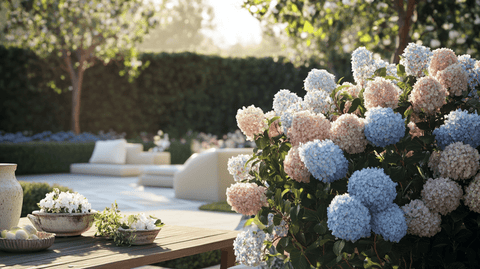











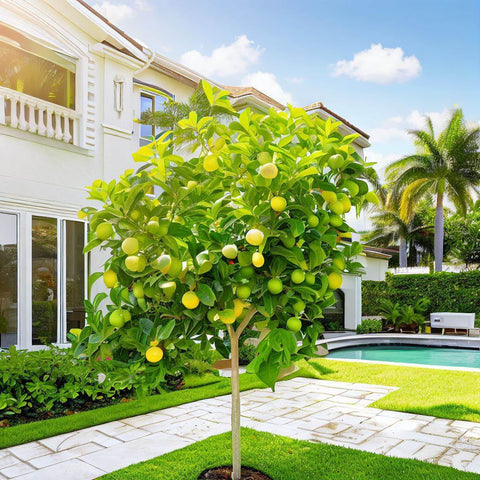


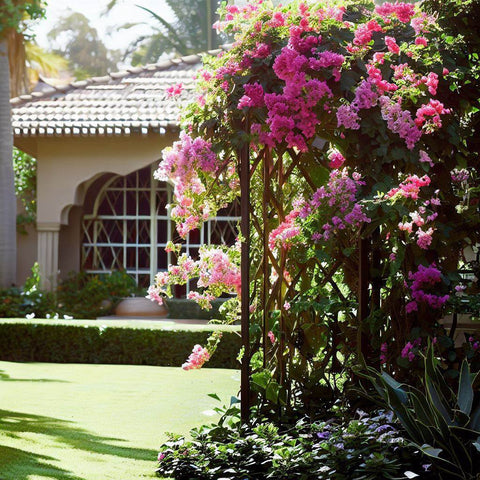
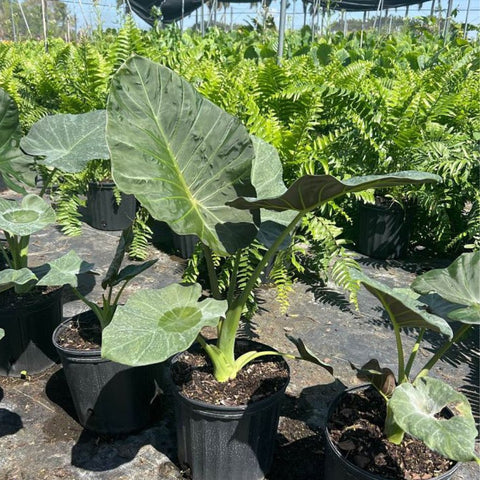
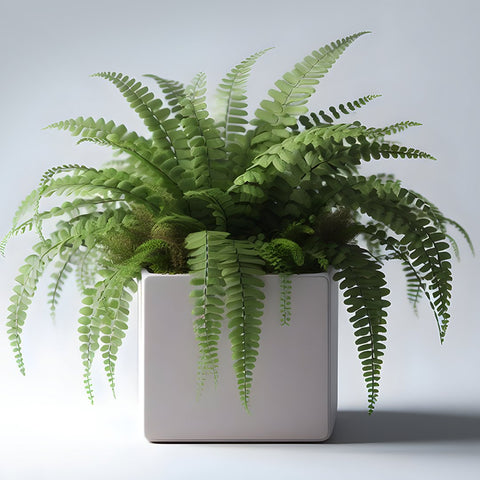











Comments (0)
There are no comments for this article. Be the first one to leave a message!